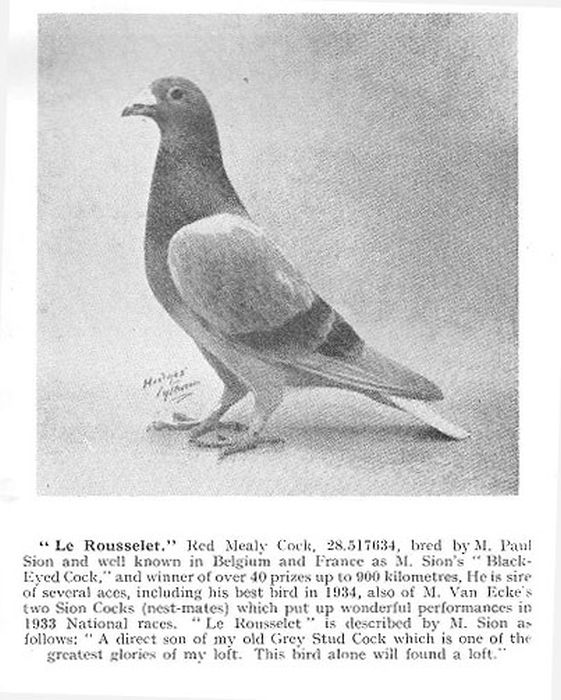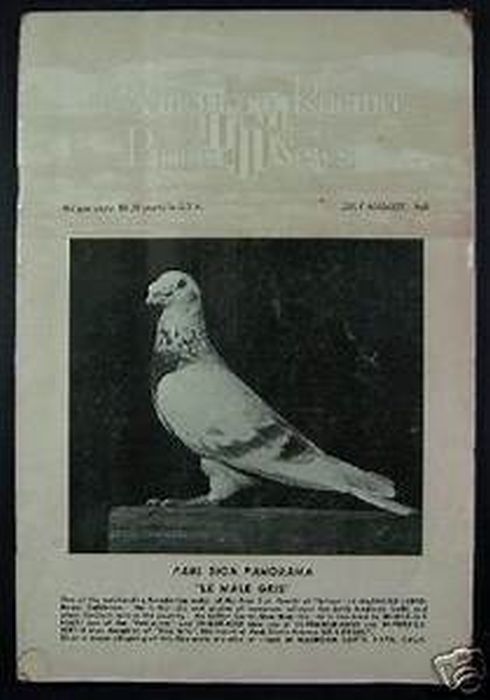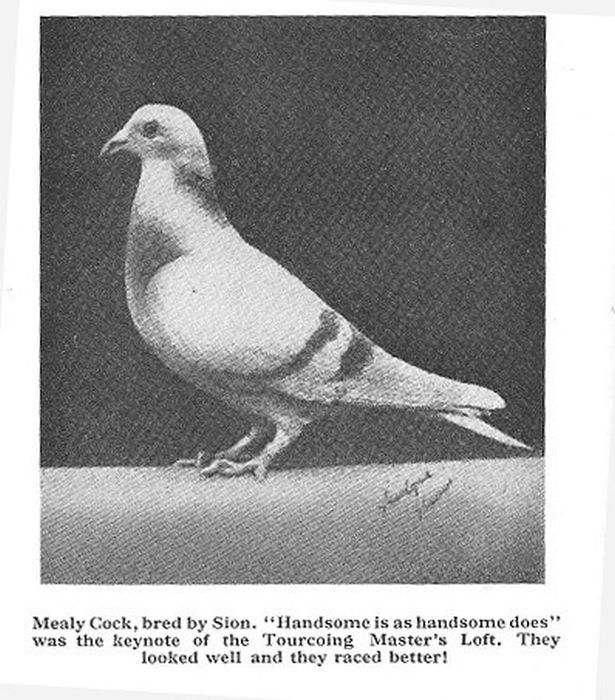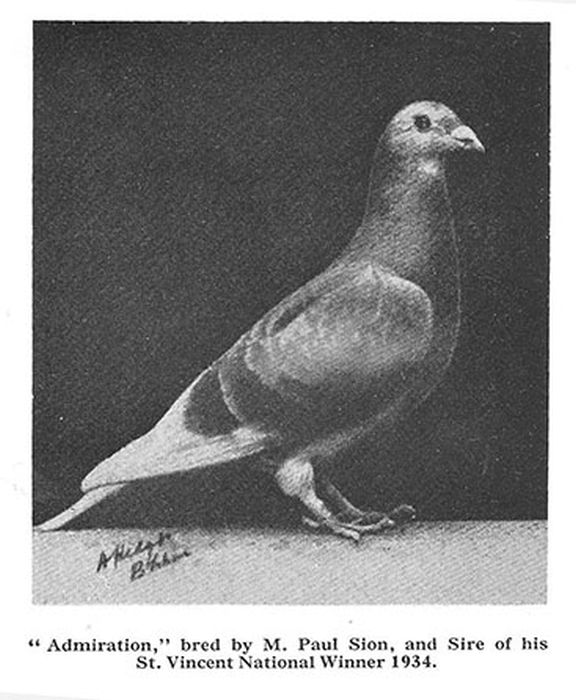Paul Sion
Paul Sion, Master Breeder & Pigeon Fancier, was born 1895, in Tourcoing, France.
- Steve O'Dea
- March 31, 2021
- 9:17 am
Watch, Listen or Read about the Sion Racing Pigeon strain below here....
 A. H. Osman said…..“This man has won more prizes in one season than many fanciers win in a lifetime”. ”
A. H. Osman said…..“This man has won more prizes in one season than many fanciers win in a lifetime”. ”
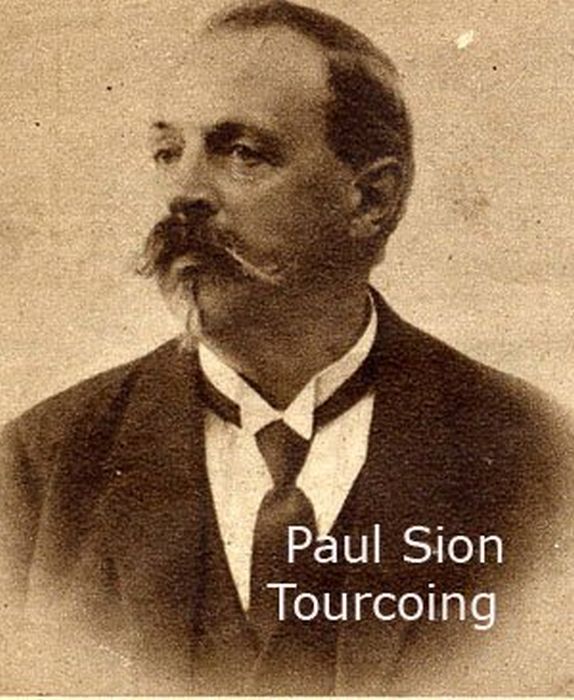
The Sion strain of long distance racing pigeons holds a hallowed place in the merit list of the world’s greatest families of the thoroughbreds of the sky. And like much that is good in Europe, he came from the culture of France.
Paul Sion, from Tourcoing France, its originator, started in the sport in 1895 and, in due course, set his mark. In fact, what he produced crossed more national boundaries throughout the world and became the source of much joy and reward to countless fanciers. To quote one eminent authority, A. H. Osman, “This man has won more prizes in one season than many fanciers win in a lifetime”.
A close friend of Paul Sion and his son Robert was the famous English racer & writer Dr. W. Anderson – his contemporary accounts of the Sion’s give us a unique insight into the methods and thoughts of Paul Sion….
“I visited this world famous fancier for the first time in 1929, and I was particularly impressed by his marvellous collection of pigeons. I must first of all give a slight impression of his magnificent loft installation.
The building was of four storeys; the ground floor housed his cars, the second floor his grain, baskets and odds and ends of loft equipment; the third was the old bird loft for widowhood and natural racing; and the fourth his young bird lofts.
Paul Sion was a keen gardener, and was mostly interested in roses and sweet peas; his other interests included Game Cocks, sporting dogs (especially setters) and shooting.
In later years I got to know M. Sion and his son M. Robert Sion much more intimately and we found many interests in common. I was able to help him with plants, gun-dogs and even game cocks! During my first visit I was able to purchase a good stock pair containing the “Vieux Gris” blood – BCC 87646/25 and BBH 44284/26. From the beginning, this pair did well and were grandparents of winners up to Rennes, 545 miles, and Nantes, 608 miles, and 1st Open Dol.
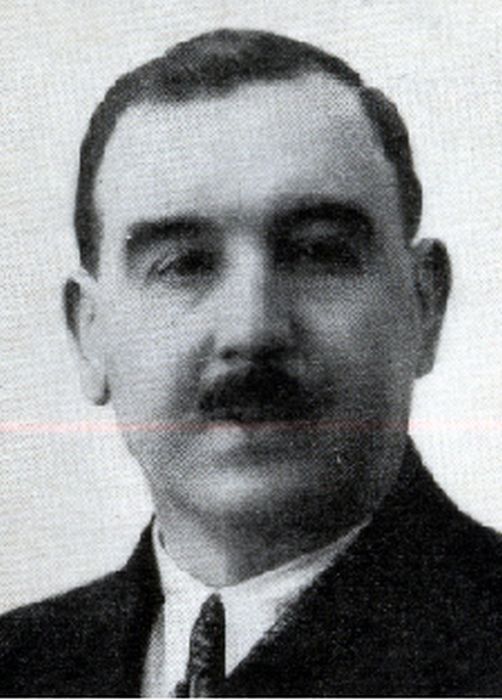
After my second visit I bought his No. 1 stock hen, a Blue 605142; she had bred many winners for Paul Sion and she also did well for me. Later I purchased a Red Chequer cock “Admiration” 605297/29, when he was a yearling. I selected him and was able to have him only because he had been shot in the leg when returning from his last race and was permanently lame. Paul rightly considered that his racing days were over. “Admiration” left at Tourcoing a youngster which was to be Paul Sion’s National winner in a future year from Morceaux. With “Admiration” I also bought a Mealy hen, 82288, who was the dam of champion “Rouge Macot”.
 “…Paul Sion considered “Champion Rousselet” and “Champion Rouge Macot” his two greatest pigeons. I was fortunate in making these selections and especially before the stock from them had won their spurs in the long races.“
“…Paul Sion considered “Champion Rousselet” and “Champion Rouge Macot” his two greatest pigeons. I was fortunate in making these selections and especially before the stock from them had won their spurs in the long races.“
They therefore justified my selection. M. Sion presented me with “Champion Rousselet” and up to the war in 1939 he gave me all the birds I required.”
“Le Rousselet” Red Mealy Cock, 28.517634, bred by M. Paul Sion and well known in Belgium and France as M. Sion’s “Black-Eyed Cock,” and is winner of over 40 prizes up to 900 kilometers. He is sire of several Aces including his best bird in 1934, also of M. Van Ecke’s two Sion Cocks (nest-mates) which put up wonderful performances in 1933 National races. “Le Rousselet” is described by M. Sion as follows: “A direct son of my old Grey Stud Cock which is one of the greatest glories of my loft. This bird alone will found a loft.” “Ch. Rousselet” in type was a perfect pigeon, of medium size, good head and black eyes (rather to my mind a dark shade of blue), beautiful body and wings. He was a Strawberry Mealy. In addition, he was like “Ch. Epinard” and other great pigeons, quiet and tame, and easy to work with. He was one of the foundation blocks in building my present Sion family.
The birds enumerated and several others from the same source and from M. Robert Sion (his son) were the original stock from which my Sion family came. They are essentially a hardier type of pigeon than the Stassarts and stand up to feeding their youngsters even as prisoner stock birds. They shine in difficult head winds, and are courageous and reliable. They are also, as Dr. Bricoux and M. Stassart proved, a very reliable cross almost with any strain. In 1946, after the war, and at M. Sion’s request, I sent him two pairs of my best Sion blood to help him to re-establish his loft.
Paul Sion died in 1947 and his son Robert continued to breed the strain his father had developed for 42 years, obtaining success comparable to that of his father. I have recently heard from his son, M. Robert Sion, that these are now in his loft and I am sure they will give a good account of themselves in future races. I am of the opinion that the son will worthily uphold the name of Sion in the pigeon world.
A few notes with reference to the origin of the Sion pigeons and regarding M. Paul Sion’s methods should be of interest.
The birds go back to a son of M. Gris Dugniol’s (Paris) champion Mealy Cock who won consistently in the long races for ten successive years. This cock,“Le Madrigal”, was of the strain of M. Kikkens of Antwerp – a family as well-known at that time as that of Wegge or Cassier, etc.
Le Madrigal was mated to a Mealy hen of the Red Vekeman blood (Wegge) and produced a blue hen with “Black Eyes” which proved to be a champion in all the races. She was later mated to a cock of the blood of Pynen and Delathouwer. From this mating came the famous champion “Rouge Sion,” who was a great winner and breeder of winners.
 “…His successes were phenomenal at all distances and especially when conditions were adverse. The birds were game and at all times dependable. I was impressed, in my numerous visits to the loft, by the uniform quality of the birds – he had always a preponderance of Reds, Red Cheqs, and Mealies“
“…His successes were phenomenal at all distances and especially when conditions were adverse. The birds were game and at all times dependable. I was impressed, in my numerous visits to the loft, by the uniform quality of the birds – he had always a preponderance of Reds, Red Cheqs, and Mealies“
Many of the latter were Mealies which were strongly Black ticked like the original old Dugniol cock, their grandfather. M. Sion conserved and cultivated this family for between thirty and forty years – the birds became his famous “Vieux Gris”. M. Sion used a suitable out-cross occasionally – he was not a confirmed in-breeder.
His successes were phenomenal at all distances and especially when conditions were adverse. The birds were game and at all times dependable. I was impressed, in my numerous visits to the loft, by the uniform quality of the birds – he had always a preponderance of Reds, Red Cheqs, and Mealies, and all these were of the same type. The young bird loft was occupied by a magnificent team. M. Sion never seemed to have a bad breeding season. Some of the birds were above medium size, but all without exception were robust and muscular.
M. Sion was a champion racer and an outstanding breeder, two qualifications which are very seldom got at the same time. On inspecting and handling a pigeon typical of the Sion family I was always impressed by the fact that although the bird looked more than medium size he was seldom heavy and he appeared smaller in the hand.
On the average the Sions are definitely bigger than the Stassarts or the Bricoux birds. They are good racers and good breeders. M. Sion was also a generous feeder and in his dietary used beans and vetches very largely. Both systems of racing were practised, natural method and widowhood. Success above the average was achieved by both methods; he did exceptionally well with his hens, but I think he preferred the system of widowhood and he practised this method with all the great enthusiasm of the expert. He was one of the greatest exponents of that game.
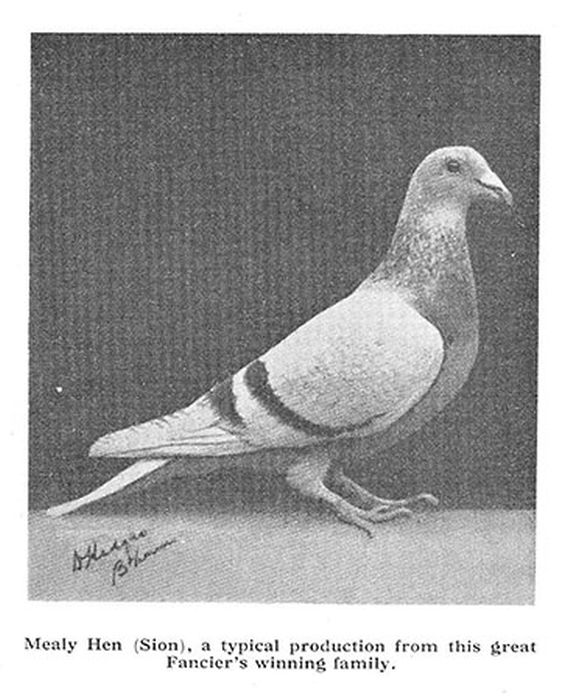
In his training of his youngsters he was an exacting taskmaster. They were thoroughly selected for physical fitness before being subjected to training and all came under starter’s orders. The Sion strain was very fashionable abroad and was introduced into many of the best lofts, e.g. by M. Stassart, Dr. Bricoux, etc. M. Ernest Duray who won the Pau National in successive years with “La Plume Blanche de Pau” was another fancier who set great store by the Sion family. His great winner was three-quarters Bricoux and One-quarter Sion.
Yes, Paul Sion who was later to be assisted by his son, Robert, truly exceeded (perhaps even) his expectations when after becoming a fancier he adopted Luis Salembier as his teacher, the latter being one of the great French distance pigeoners for over 50 years at that time. Sion admitted in 1935 that he belonged to the Luis Salembier school.
 “…When once asked what were the requirements for success in long distance and marathon racing Paul Sion replied – “strain and constitution”.”
“…When once asked what were the requirements for success in long distance and marathon racing Paul Sion replied – “strain and constitution”.”
Upon following the advice of his mentor, Sion obtained the best of distance bloodlines including representatives of the old Verviers strain and for decades cultivated what he referred to as his old Gris (grey) strain.
When once asked what were the requirements for success in long distance and marathon racing Paul Sion replied – “strain and constitution”. A reply which was in the form of an article in which the author took, as an example, there were horses good in soft and other horses good in hard conditions. Opining that there were pigeons or strains good in clear, weather conditions and others good in tough cloudy conditions. The latter strains being the best for the ultra-distances and routes across water.
Thus according to Sion only those birds whose forebears distinguished themselves in difficult races were in turn capable of doing the same.
Paul Sion died in 1947 and his son Robert continued to breed the strain his father had developed for 42 years obtaining success comparable to that of his father.
Whatever is one’s response to Sion’s position in that article there is one notable fact and that is – he was not an advocate of inbreeding. Like his master Salembier, Sion, participated in out crossing, which was based upon much thought and research into the pedigree and the background of the potential cross. The fruit of which was a strain that was almost identical in appearance. Apparently this great pigeoner had perfected his out crossing approach to the level of a science.
Today, there are those who claim to have representatives of the Sion strain. How pure they are I do not know, but there is a wide agreement that when one sees a Sion one knows that it is a Sion, which is but a reflection of the genius of their founder.
The Sion genetics have endured in champions around the world, their presence and influence has even crossed into Ireland where the tough characteristics so loved by Paul Sion have been blended with proven Irish bloodlines to produce many champions including those of the Blue Riband Kings Cup.

